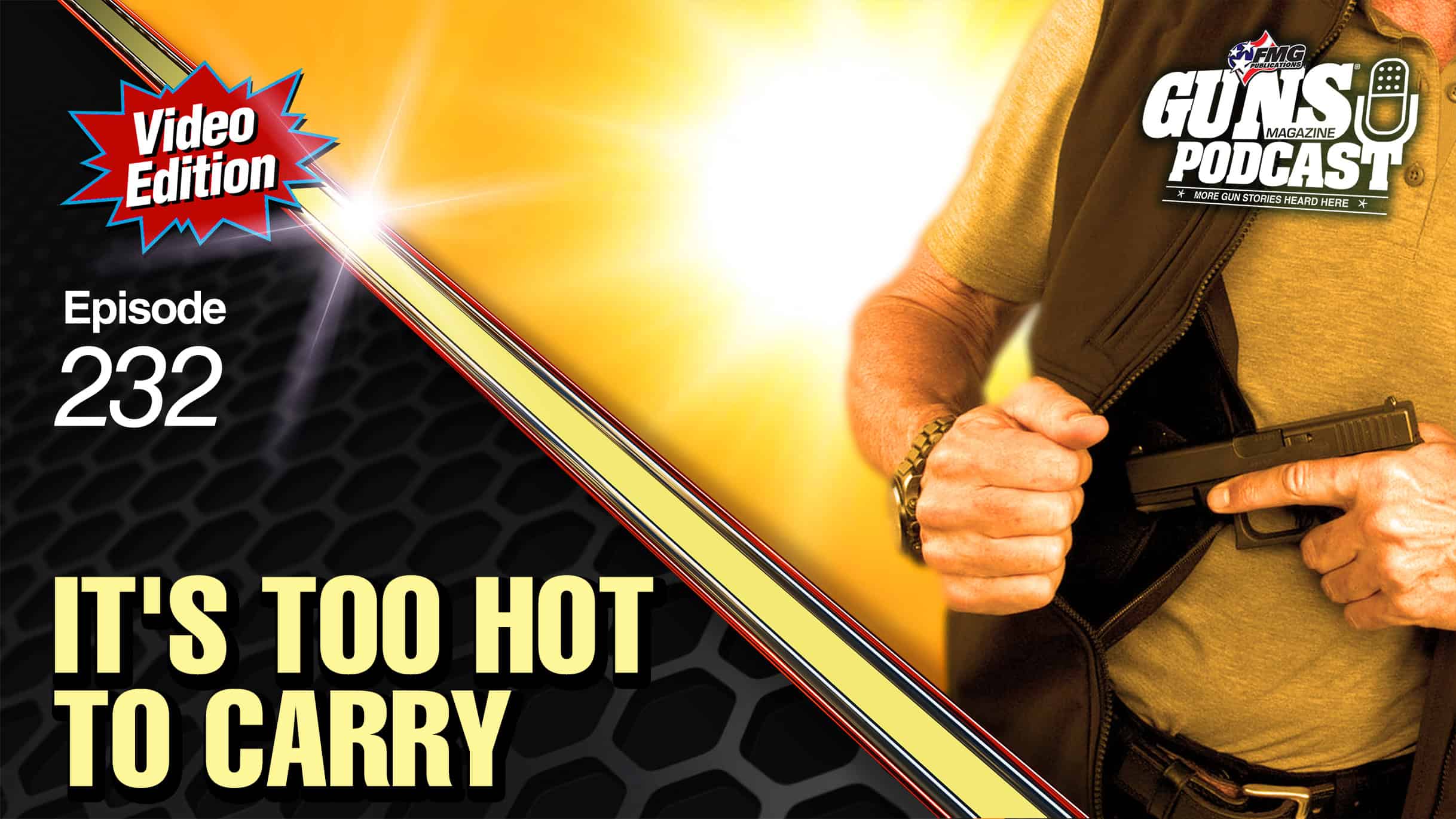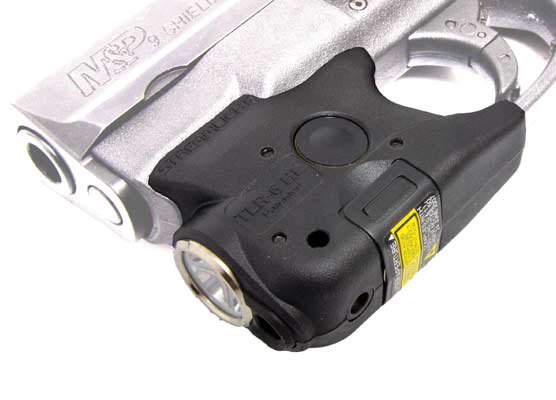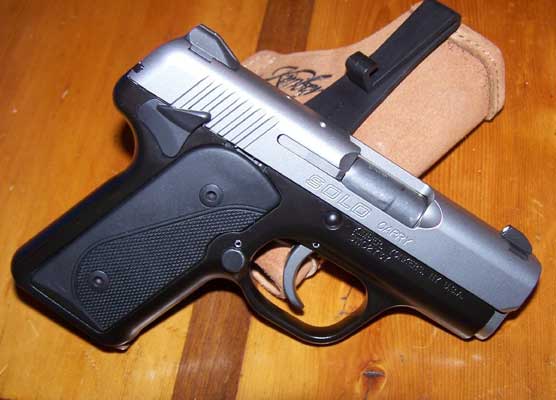Semi-Perfect
John’s Classic Perfect Packin’ Pistol Concept
Is By No Means A Revolver-Only Proposition
When I came up with the definition of “Perfect Packin’ Pistol” many years ago, I set the parameters for a companion sidearm, be it single-or double-action sixgun or semi-auto. The major characteristics of the “PPP” are a barrel length of 4 to 5-1/2 inches. It should be easy to pack, fast into action and chambered for a cartridge capable of handling any situation likely to arise in a particular area. Meaning, regardless of action type, it has to be very portable, exceptionally packable and potent to the level required.
Friend and sixgunsmith John Linebaugh added another requirement. Not only should it be easy to pack all day, it should ride appreciably well under a pillow or bedroll at night! With sixguns, it could be chambered in anything from .22 Long Rifle up to .500 Linebaugh—the choice being dependent upon where I was traveling . I could certainly feed myself well with the .22, however, something larger is required should self-defense enter into the picture. By this I mean protection from 4-legged as well as 2-legged predators.
When I look at semi-auto “PPP” candidates, the choices are much more limited than when it comes to sixguns. For my use, I definitely prefer adjustable sights. While most sixguns come with them, this isn’t the case with many semi-autos. Basically, there are three styles of sights on semi-autos. The first, and most obvious, is the traditional fixed found on the original 1911; second are tactical sights which are rugged, easy to see, low-mounted and without sharp edges to catch on clothing; finally, there are fully adjustable sights. We have such a variety of ammunition available these days, having adjustables adds to the versatility of any firearm. With traditional or tactical sights, the chosen load must be adapted to the sights. With adjustable sights, we can accommodate any load.
The packability requirement precludes sixguns with longer frames because they require cartridges like the .445 Supermag or .500 S&W. This qualifier also extends to semi-autos such as the Desert Eagle. (The choosing of a semi-auto “PPP” is highly subjective, and I am definitely biased towards 1911’s with adjustable sights.)
There are many polymer-framed semi-autos offered and some even have adjustable sights. But after 60-plus years of shooting 1911’s, my hand is pretty much molded to their grip style. I also prefer an all-steel or steel/alloy pistol to plastic frames. Ruger is making some excellent 1911’s in both standard and Commander-sized versions, however, as this is written, they have not yet offered an adjustable-sighted version or any other chamberings except .45 ACP. I can only hope they remedy this.
Due to space constraints, I have to be quite selective in my choice of chamberings and specific models. For now, I will stay with my four favorite semi-auto chamberings when it comes to selecting a “PPP.” They are 9mm, .45 ACP, .38 Super and 10mm. The fact there are other suitable chamberings, such as the .460 Rowland and .357 SIG (even the .30 Luger), has not escaped me, however, they will have to wait for another time.
The 9mm Parabellum
This cartridge goes all the way back to 1902 when it was introduced in the Luger. It became the standard cartridge/pistol combination for the German Army in 1908, which is why the Luger is often referred to as the Pistole 08. For years, the 9mm vs. .45 ACP debate raged and the hardball 9mm always came in a distant second to the hardball .45. However, today we have so much excellent ammunition available for both cartridges the argument has disappeared for most of us. No one should feel under-gunned in most situations with quality 9mm JHP ammunition. In a “PPP,” the 9mm is certainly not a good choice for large dangerous critters; however, the same thing can be said about the .45 ACP. The 9mm will certainly handle varmints, small game and 2-legged predators.
In the fall of 2010, when I was recuperating from surgery, I decided I wanted a 9mm 1911. They were not all that easy to find, but Springfield Armory came to the rescue with a stainless steel 1911, complete with adjustable sights. That seems to have been the beginning, and now several companies offer the 9mm on the 1911 platform. Springfield Armory followed with their 9mm Range Officer—basically a blued version of the 1911, also with adjustable sights.
Looking to Kimber, I found the stainless steel Target II with adjustable sights. Just recently, Iver Johnson began offering a blued 9mm 1911 with adjustable sights.
Rock Island Armory’s .22 TCM is another choice, which can be converted to 9mm simply by changing the barrel and recoil spring. These versatile pistols have 5-inch barrels, adjustable sights and are offered in either a single or double-stack configuration.
And Browning has been offering the Hi-Power with fixed sights and just recently added an adjustable sighted version. I like the Browning Hi-Power almost as well as the 1911.
Our classic big-bore was created by John Browning in 1905 and then chambered in the Government Model of 1911. As a self-defense cartridge, it may be equaled but has certainly never been bettered. In a “PPP,” especially with one of many JHP loads available, it will certainly handle deer-sized game at reasonable distances.
The 1911 was designed for combat, but during the period between the two world wars it was offered in a National Match version. But it was the custom gunsmiths, in the 1950’s, who discovered exactly what the 1911 .45 was capable of. They turned out tightened and tuned pistols complete with adjustable sights for bull’s-eye shooters. Then in the late 1950’s, Jeff Cooper began advancing the 1911 as the ultimate fighting pistol. Since then a long list of very capable gunsmiths have come up with excellent versions of it with adjustable sights. They’re not only capable of exceptional accuracy, but function reliably even with slide, frame and barrel fitted very tightly.
The National Match evolved into the Gold Cup National Match and was offered both in the 70 and 80 Series, with the latter having an internal firing pin safety. For many years, I lusted after a Gold Cup Colt .45, featured by the late, great John Lachuk in several of his articles. It was particularly notable because it was fitted with a pair of Combat Camp Perry grips from Herrett’s. I hoped someday to have such a combination, which I eventually acquired, and John became a special friend as well.
As with the 9mm, both Springfield Armory and Kimber offer excellent “PPP” 1911 .45’s—the Range Officer and the stainless steel Target II. Iver Johnson’s Eagle is also available in .45, but their Long Slide’s increased sight radius is easier on older eyes, even though the barrel/slide configuration is a bit longer than allowed in my original definition.
The Colt Commander first arrived in the 1950’s with a 4-1/4-inch barrel and a lightweight alloy frame. An all-steel version was then offered; however, I don’t know of any factory versions ever offered with adjustable sights. Jimmy Clark put together a custom Colt Commander with a steel frame and an adjustable rear sight. It makes a great “PPP.”
.38 super
The roots of the .38 Super go back to the 1900’s, when the .38 ACP was designed by Browning and chambered in the Colt Model 1900. Fast-forward to the 1920’s, a time when police found themselves outgunned by the criminals of the era. So Colt came forth with an improved version of the .38 ACP, called it the .38 Super and chambered it in the 1911. On the exterior, the two cartridges are identical; however, the .38 Super should never be fired in any pistol designed for the .38 ACP.
The original .38 Super fired a 130-grain FMJ bullet at speeds from 1,200 to 1,300 fps and was used by many peace officers at the time. Frank Hamer, the former Texas Ranger, who came out of retirement to track down Bonnie and Clyde, favored the Super. John Henry FitzGerald of Colt preferred it for long-range shooting over the .45 ACP as it had a much flatter trajectory.
Jeff Cooper saw the .38 Super as an ideal cartridge chambered in a “trail gun” as he called it. Anything the 9mm can do the .38 Super can do slightly better. In fact, in some of the hotter loadings, the Super nips at the heels of the .357 Magnum in short-barreled sixguns.
One of the long time problems with the Super was inaccuracy due to improper headspacing. I sent my .38 Super Colt Commander off to Bill Wilson many years ago, and he re-barreled it with the result being my 25-yard groups shrunk from 12-plus inches down to 2 inches when using Lyman’s 358156 gas-checked bullet in custom loads. Currently Colt offers a .38 Super, which is way high on the list of “PPP’s.” The Colt Special Combat is a Government-sized 1911 with adjustable sights.
Kimber’s .38 Super of choice is the Stainless Steel Target II, which should sound familiar by now, as it is the spitting image of the pair mentioned in 9mm and .45 ACP. Either one of the three would qualify as a “PPP.”
My final .38 Super candidate is as good as it gets. Bill Wilson’s Wilson Combat version is a full-size 1911 and wears exquisite giraffe bone grips.
The 10mm
The 10mm is a relatively new kid on the block, having first arrived in 1983 chambered in the Bren Ten offered by Dornhaus & Dixon. The original loading featured a 200-grain FMJ bullet at 1,200 fps, however, Dornhaus & Dixon disappeared and the 10mm cartridge would have also been lost if Colt had not chambered it in their 1911 Delta Elite. Personally, I think the original load is a little too much for the 1911 design, so I’d drop down to a lighter bullet at this speed or use the 200-grain bullets at around 1,050-1,100 fps for longer pistol life. This is the most powerful load offered in a production pistol, which is portable, packable and sufficiently potent for most uses.
The 10mm has yet to get the recognition it deserves and very few guns chambered for it are offered with adjustable sights. The Kimber Stainless Steel Target II trio is now a quartet with the addition of the 10mm version. Except for the addition of custom Herrett’s grips and slide markings, all four of these 1911-style “PPP’s” are identical. The 10mm 1911 has gained some well-deserved recognition of late as handgun hunter Razor Dobbs features it on his TV show, taking many game animals with his Dan Wesson 10mm. With it, he’s taken elk and nilgai as well as deer. My friend Ted Nugent is also a big fan of the 10mm.
One of my favorite 10mm 1911’s is from Nighthawk. The Custom Longslide is a high quality custom pistol with beautifully polished, heavy-duty interior parts and a fully supported chamber. The bushing is fitted very tightly as is the frame-to-slide fit. The 6-inch barrel is match grade and mated up with a forged frame and slide. Sights are excellent, consisting of a fully adjustable rear, 3-dot style and a green tritium post front. Both are set in dovetails with the rear sight set low in the slide. The edges of the rear sight are rounded off to protect both hand and clothing. In fact, there are no sharp edges on the entire pistol.
The Nighthawk Custom Longslide has a matte green PermaKote finish on the frame and slide, a beavertail grip safety and a skeletonized hammer, combined with a superb creep-free trigger with a pull weight of just under 3-1/2 pounds. Both the frontstrap and flat mainspring housing are perfectly checkered with 25 lines per inch. The reddish, exotic wood grip panels are also nicely checkered. If ever a 10mm qualified for “PPP” competition, this Nighthawk definitely does!
It’s said you can’t teach an old dog new tricks, but thanks to SIG SAUER’s Model P220 10mm Hunter, I have learned a valuable new “trick” with no pain and much gain. This single-action-only pistol (which I covered in the July issue) has a light, short trigger pull—highly appropriate for a hunting handgun. It also sports Kryptk camo and a 5-inch barrel. For everyday outdoors carry, I don’t think I would need to look much further than the P220 for my “PPP.”
Perfection is an elusive goal. Many shooters have found a “PPP” but no one has found the “PPP.” Anyway, if they did, how would they know? As I said a long time ago, the joy of a Perfect Packin’ Pistol is not in the finding. It’s in the never-ending search!












